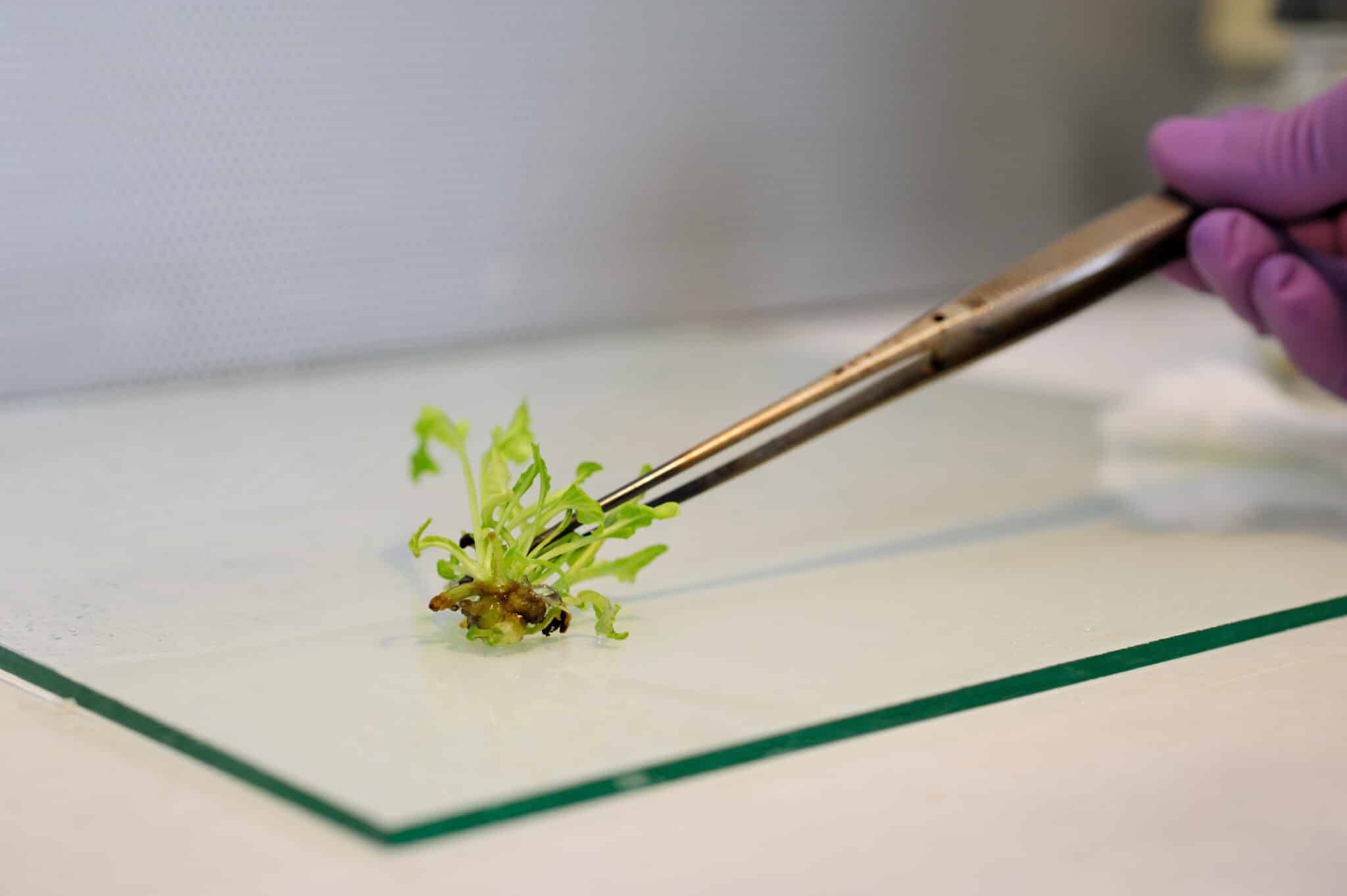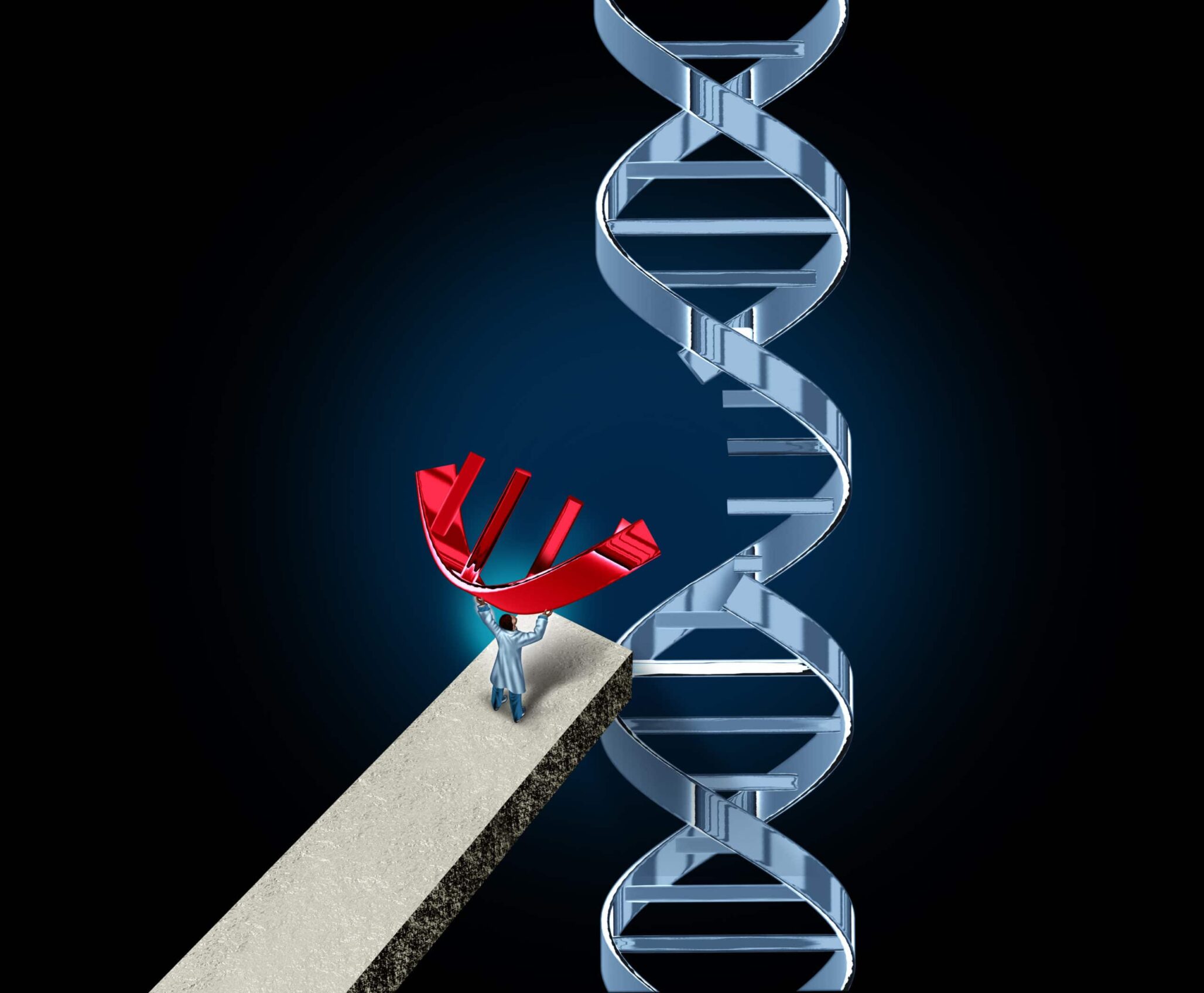How to find the right EU Regulation for Genome Editing Products
In November 2020, the Nobel Prize in Chemistry was awarded to Emmanuelle Charpentier and Jennifer Doudna, co-inventors of the CRISPR-Cas, a genome editing technique, for this major discovery that revolutionized genome modification techniques with a founding article published in Science in 2012.
A Biotech Breakthrough Requires New Regulation
The genome modification techniques, developed as early as the 1940s, reproduce in a research laboratory, phenomena which exist naturally. They allow us to free ourselves from the vagaries of nature, by selecting the changes that one wishes to induce. Random mutagenesis and transgenesis, which require heavy experimental manipulations (mutagen radiation or mutagen chemical reagents, particle cannons, electroporation, or bacterial transfer), are now taken over by the NBTs (New Breeding Techniques). Some of these new techniques use enzymes, directed nucleases and thus can change the nucleic bases of DNA. They edit the genome. These latest techniques are more powerful because they are more accurate and less expensive. The CRISPR/Cas technique (CRISPR for Clustered Regularly Interspaced Short Palindromic Repeats, which involves a guide ribonucleic acid associated with the CAS enzyme), has been called “molecular scissors” to emphasize its accuracy and also “garage biology”1 to emphasize the ease of implementing it.
The applications of these new genome-editing techniques are multiple and concern human, animal and plant health. Today the regulation that must be applied to them is the key question. Should genome-editing products be considered genetically modified organisms (GMOs) subject to the same regulations as products derived from transgenesis? There is no unanimous consensus across the world depending on countries’ policy. For agricultural products, the consequences in a globalized world where goods circulate, will necessarily be important not only in terms of competition but also for a given country in terms of national agri-food independence.
Genome modification techniques mimic natural phenomena2
The modification of the genome of organisms is a natural phenomenon inseparable from life. It allows continuous adaptability to cope with changes in their environment. These transformations, necessary for the life and survival of individuals and species, result in a wide range of responses, the bedrock of biodiversity, and lead to constant evolution of ecosystems. This modification of the genome involves several mechanisms that occur spontaneously in nature, such as mutagenesis and transgenesis. It has been found that the sweet potato of the genus Ipomoea during its evolution, acquired DNA fragments of soil bacteria of the genus Agrobacterium, and can be considered as a GMO, a naturally transgenic organism. Some varieties listed in the European Common Catalogue of Varieties of Agricultural Plants Species are the result of a selection process resulting from a spontaneous mutation. Sunflower varieties were developed from plants that had shown a natural tolerance to a herbicide (spontaneous field mutation). The study of this natural mutation resulted in identifying the genome changes associated with this characteristic, selecting it and further introducing it into lineages. This technology has been developed by BASF under the name Clearfield® and by Dupont de Nemours under the name ExpressSun™.
NBT and SDN (site directed nucleases)
New genome-editing techniques are included in a set of techniques called NBT (New Breeding Techniques) that improve molecular targeting of genetic modification. Following the French High Council, the techniques listed by the European Commission are “Oligonucleotide Directed Mutagenesis (ODM), Zinc Finger Nuclease Technology (ZFN), Cisgenesis and Intragenesis, Grafting, Agro-infiltration, RNA-dependent DNA methylation (RdDM), Reverse Breeding, Synthetic Genomics, Transcription activator-like effector nuclease (TALEN), Clustered Regulatory Interspaced Short Palindromic Repeats (CRISPR)” and also “Site-directed nucleases (SDNs): ZFN, MN, TALEN and CRISPR/Cas9 can be used to target selected DNA sequences. This targeting can have three different purposes: (1) Mutation (insertion or deletion) of a single base pair or a small number of nucleotides (even several dozen) that is random although targeted at a specific site on the genome, this is known as SDN-1; (2) Allele conversion, modifying part or all of a gene sequence, which is known as SDN-2; (3) Targeted integration of an external DNA sequence, known as SDN-3”.3
Innovations That Improve Human, Animal and Plant Health

Regnault-Roger
NBTs have now become essential in the medical sector and the range of applications is wide, from the production of pharmaceutical proteins by plants or therapeutic vaccines to the adaptation of animal organs for transplantation in humans in order to alleviate the shortage of organ donations, or the Gene drive associated with CRISPR, against mosquito vectors of tropical infectious diseases (dengue, malaria, chikungunya, zika).
NBTs also open up broad perspectives in veterinary medicine. Research is being developed to combat diseases that affect livestock, such as increasingly antibiotic-resistant bovine tuberculosis or African swine fever which is a major threat worldwide, notably in China. Work is also being carried out to improve animal welfare by reducing the cold sensitivity of piglets, and to create breeds of cows without horns in order to reduce the risk of livestock accidents and to abandon dehorning, a painful operation.
There are also many applications in the field of plant health4. Numerous patents based on the CRISPR-Cas technique have been filed to improve crop yields and adapt to climate change (water deficiency, soil salinity), control insects and diseases such as tomato or rice blight5. The most studied plants are rice (Oryza sativa), the model plant Arabidopsis thaliana followed by tobacco (Nicotiana tabacum and N. benthamiana), tomato (Solanum lycopersicum) and corn (Zea mays).6
A Regulated World
Early on, the question arose to examine the risks of the genome changes developed in the laboratory. The Asilomar International Conference was organized in 1975 by Paul Berg, a biochemist at Stanford University and a 1980 Nobel Prize in Chemistry, to examine the assessment of these risks, and as a result, regulations on the use of biotechnology were put in place in many countries. In the United States, the Coordinated Framework for Regulation of Biotechnology was published in 1986.
In Europe, the implementation of GMO regulations was a multi-step process (insert 3). It concerns both gene therapies and transgenic crops. European regulations are applied to products obtained by the technique of transgenesis, the last discovery of the 1980-1990 decade, while those obtained by random (classical) mutagenesis, a technique used since the 1940s, were exempt. Indeed, despite the precautionary principle on which the Directive 2001/18/EC is based, it seemed useless, even at that time, to check the results of a technique that had never caused any problem for 50 years.
EU-27 GMO regulations
Two directives articulated together were published in 1989 and 1990, Directives 89/219/EEC and 90/220/EEC “on the use of GMOs in confined or open environments”, followed ten years later, in 2001, by the Directive 2001/18/EC “on the deliberate release into the environment of genetically modified organisms” which is still in force. It was amended in 2015 by the Directive EU 2015/412 “amending Directive 2001/18/EC as regards the possibility for the Member States to restrict or prohibit the cultivation of genetically modified organisms (GMOs) in their territory”, which is in fact focused on the societal acceptability of transgenesis. Finally, in 2018, the Directive 2018/350/EC “amending Directive 2001/18/EC of the European Parliament and of the Council as regards the environmental risk assessment of genetically modified organisms” updates the regulatory framework for environmental risk assessment. The Regulation (EU) 2015/2283 on novel foods completes these rules and guidelines.

This regulation leads to provide extensively documented files, including studies of highly unlikely prospective hypotheses and includes drastic and expensive post-market monitoring to detect an uncertain and unknown anomaly that might be related to the cultivation of a transgenic plant. Only the major international conglomerates in the sector (now the American Corteva, the Chinese ChemChina and the German Bayer)7, have sufficient financial base to assume such regulatory requirements, which are added to the normal application process for marketing authorisation for a new plant variety.
Quick Overview of Disposals on GMOs Guidelines in the European Union8
The technical file includes a complete description of the plant and its transformation, including a complete toxicological record (food, allergenicity, etc.). It is accompanied by an environmental risk assessment plan specifying the exposure and whether or not there is gene flow, persistence and invasion phenomena, possible immediate, delayed or cumulative long-term effects on target and non-target organisms (fauna, environmental flora, operators), biogeochemical cycles and what measures are taken to manage them from field experiments and also measures that would be taken in extreme cases described by laboratory simulated scenarios.
It concludes with a post-marketing monitoring plan carried out over the 10-year authorisation period and resulting in annual reports to the European Commission. It includes general monitoring and specific monitoring. Specific monitoring is intended to highlight the occurrence of expected changes and to test possible assumptions about negative effects. General monitoring aims to identify unintended changes and unintended effects on non-target and unidentified target populations.
If it might seem appropriate to have such regulations at a time when there were many unknowns about the behaviour of genetically modified plants in the field, is it still the same today? There are several arguments in favour of its relief. For example, the three American National Academies of Arts and Sciences, Engineering and Medicine published a more than 600-page report in 2016, following the hearing of 80 individuals among the stakeholders, a collection of 700 comments and the analysis of more than 1000 scientific publications on cultivated plants produced by genetic engineering over a 20-year period. After examining agronomic and environmental effects, public health effects and social and economic consequences, this report concludes that these biotech plants grown in accordance with good agricultural practices do not present more toxicity and ecotoxicity or environmental risks than conventional plants.
It was in this context that the question of regulations that should be applied to the NBT has arisen from 2015 onwards.

A Divided World
Since 1996, the year in which the first transgenic crops (biotech) were planted, the world is divided into two parts: on the one hand the countries that adopted them – they are in North and South America, Asia and the Pacific-Oceania region -, and on the other hand, those that rejected them – the Middle East and a majority of African and European countries (with the exception of Spain and Portugal)-.
Today, 191.7 million hectares of biotech plants9 are grown with a range of globalized crops (corn, cotton, soybeans, as well as canola that derives from rapeseed) or more territorial (Papaya in Hawaii, Bt Eggplant in Bangladesh, Artic Apples in British Columbia, Golden Rice in the Philippines). They express herbicide tolerance traits and resistance to insect pests or diseases, and more recently drought-resistant traits or biofortification (e.g., Engineering Golden Rice)
So, this clearly distinguishes probiotech countries (which grow and import GMO crops) and those that are more reserved (which import GMO crops but refuse to grow them). This is further reflected by the rules that are applied for genome editing innovations.
Genome-Editing Products Non Submitted To GMO Regulations In Many Countries
It is therefore not unexpected that the first regulations applied to genome-editing products were taken in South America, where countries are often described as the “land of choice” for biotech plants and which are characterized by more than half of their area of arable land grown with transgenic plants are located: Uruguay (54%), Argentina (61%), Paraguay (78%) Brazil (93%)10.
Argentina with resolution 173/2015, Chile (normative resolution 2017), Colombia with resolution 29299/2018, Brazil with its normative resolution 16/2018, and Paraguay in 2019, decided to proceed on a case-by-case basis but by exempting from regulation any new organism genetically modified by NBT that would not incorporate “new combinations of genetic material”: genome-editing products that do not incorporate external DNA are not considered GMOs. Presently Uruguay does not have any specific regulations for genome-editing products but has signed a manifesto with 12 other countries in 2018 to the World Trade Organization stating that “arbitrary and unjustified distinctions” between cultures derived from genome-editing or conventional grow-up should be outlawed11. Other signatory countries include Argentina, Brazil, Australia and the United States.

In the United States, new rules, called the SECURE (Sustainable, Ecological, Consistent, Uniform, Responsible and Efficient) Rule applied to new genome-editing biotechnology, were published on 18 May 2020 in the Federal Registry after a wide consultation was held to gather the opinion of all. A plant genetically edited for minor changes in the genome such as changing or removing a pair of bases or introducing a gene known to belong to the plant’s genetic pool will be exempt from federal regulations applied to GMOs12. It is the characteristics of the final product that are now evaluated and not the method of obtaining. The U.S. Department of Agriculture’s (USDA) Animal and Plant Health Inspection Service (APHIS) estimates that very few new varieties (around 1%) that are submitted for marketing authorization will not benefit from this regulatory relief, which targets SDN1 and SDN2 modifications. The aim is to foster innovation in varietal improvement and to increase the number of products on the market. The USDA has thus taken into account the barriers to innovation created by the current regulations applied to GMOs13.
Another North American country, Canada does not treat genome-editing products differently from other products from innovations that have new traits. The method of obtaining (mutagenesis, transgenesis, NBT, conventional crossbreeding etc.) does not matter. What matters are the properties of the finished product obtained, which is assessed on a case-by-case basis by the Canadian Food Inspection Agency (CFIA).
On other continents, Japan and Israel have decided not to regulate genome edited products that do not contain new foreign DNA. Australia exempts SDN1 genome editing products from regulation but calls for a record for SDN2 and SDN3, opting for an intermediate situation between the GMO deregulation of the countries mentioned above and the European position. In 2020, Russia reaffirmed its opposition to the cultivation and breeding of agricultural GMOs except for research purposes. But since 2019 a research programme of 111 billion roubles (about 1.23 billion euros) has been set up aiming to develop some thirty genetically edited varieties of wheat, barley, sugar beets and potatoes. The decree issued to this effect states that these new varieties should be considered equivalent to conventionally obtained varieties. China has not defined a specific regulatory status for genome-editing products but has committed US$10 billion in research programmes. China is the country which owns the highest number of patents for CRISPR/Cas agricultural applications14. In 2020, India published guidelines that are not final to date on the regulatory requirements that would be requested from SDN1 and SDN2 for risk assessment but decide that SDN3 including foreign DNA is falling under a GMO-type file. Several countries in Southeast Asia are continuing their assessments. The New Zealand government, following a decision by High Court of this country, ruled in 2016 that genome-editing products should be considered GMOs. But ensuing debates conducted by the Royal Society of New Zealand after this decision, “the Environment Minister, along with researchers, called for an update to the HSNO (Hazardous Substances and New Organisms) Act, arguing that it is essentially impossible to obtain approval for any gene edited crops and that there is no clear path to market”15. Some voices (New Zealand’s Opportunity Party) are asking for a de-regulation of gene edited organism with no added new genetic material.
What are the consequences of these regulatory adjustments? In Argentina, which opted early in 2015 for regulatory relief, lower approval costs are accompanied by an expanded supply of new engineering products. This situation is promoting the development of new and more efficient varieties to adapt to climate change or to better resist crop pests and pathogens.
Debate in the European Union
The situation is quite different in the European Union (EU). Legally seized by the French Council of State (Conseil d’Etat), the European Court of Justice (ECJ) ruled on products obtained by directed mutagenesis (thus in particular obtained by genome editing). By a judgment of 25 July 2018, the Court ruled that the products obtained by mutagenesis techniques post-Directive 2001/18 must be subject to EU GMO regulations, while those obtained by “traditional” mutagenesis techniques (used before 2001) are exempted as previously but Member States are given latitude to submit these “traditionally produced” organisms as well. This judgment was transposed into French law by the Council of State on 7 February 2020 with a very restrictive interpretation. Consequently, the French Council of State calls for varieties, which originated from spontaneous mutagenesis in the field but were improved by mutagenesis directed in the laboratory, and already used in the field for several years, be removed from the Official Catalogue of French cultivated species and varieties. However, the European Commission, supported by five Member States (Denmark, Spain, Italy, the Netherlands, and the Czech Republic) issued a detailed opinion on 22 September 202016challenging the conclusions of the French Council of State and asking it to review its decrees. It states that there is no need to distinguish between in vitro and in vivo or spontaneous mutagenesis, perfectly in line with the opinion of the Scientific Committee of the French High Council of Biotechnologies issued on 29 June 202017, and that the decisions of the French Council of State are, in this case, contrary to European regulations within the framework of the Common Market.

The ECJ ruling was also commented on by the Group of Chief Scientific Advisors, members of the Sam (Scientific Advice Mechanism), a high-level expert committee established on 9 June 2015 to independently and transparently inform the European Commission on scientific subjects in order to perform the EU’s policies. In a statement entitled ” A Scientific Perspective on the Regulatory Status of Products Derived from Gene Editing and the Implications for the GMO Directive”18 the committee recommended “revising the existing GMO Directive to reflect current knowledge and scientific evidence, in particular on gene editing and established techniques of genetic modification”, particularly for reasons of control and traceability of products obtained by NBTs. It calls for the characteristics of the final product to be evaluated instead of legislating from the method of obtaining. It stresses the need to take into account ” the creation of a favourable regulatory environment for innovation so that society can benefit from new science and technology” and to create a regulatory environment conducive to innovation so that “society can benefit from new science and technology.” Finally, it calls for societal dialogue between stakeholders and the general public.
This public debate is now open. A European citizens’ initiative Grow scientific progress launched by a group of European students from Wageningen University called for a revision of the Directive 2001/18/EC and a change in existing legislation to “focus on the crop rather than the technique. In this way safety is ensured while the valuable benefits of new techniques are not lost to illogical regulatory hurdles”.19 Political parties are also taking over. Several well-known members of the German Green Party, elected in various political bodies such as the Bundestag (German parliament) and the Hamburg Senate, published, in a non-majority approach, in June 2020, a manifesto entitled: “New times, new responses: regulating the law of genetic engineering in a modern way”. They point out that applied genetic engineering in human health is universally accepted and that applications in agriculture can also be part of sustainability “appropriate supervision”; saving time to face the challenges of the future such as climate change. Noting that the current regulations favour “monopoly structures in agriculture”, which hinders public research, they stress the need for new rules to give public institutions and medium-sized enterprises an opportunity to use these new techniques to better respond to innovation challenges. They conclude that European regulations no longer correspond to the current state of science. They asked for “a balanced and prudent technological assessment in dialogue with science”20. In addition, in November 2020, the European Union of Agricultural Academies (UEAA), supported by the Member States’ Academies, is concerned that 80% of patents filed on the applications of the CRISPR-Cas technique belong to American or Chinese companies as opposed to less than 10% European societies. It takes a stand to call for new regulations on GMOs adapted to modern breeding techniques21. On the same line, the Royal Swedish Academy of Agriculture and Forestry organizes end of January 2021 a webinar on this very topic claiming that a “clarification of the legal status of genome edited organisms is urgently needed” in accordance with the EU “Farm to Fork Strategy”.22
It is in this context that the European Commission is currently developing a document planned to be released in early spring 2021. Such a document is of critical importance to the future of European agriculture and the agri-food independence of its Member States.
Editor’s Note: Catherine Regnault-Roger is Professor of Universities Emeritus at the University of Pau and the Adour Countries (E2S), Member of the French Academy of Agriculture and the French National Academy of Pharmacy, Member of the Scientific Committee of the High Council of Biotechnologies
Disclaimer:
The author states that she has no conflict of interest with the subject. Her opinions expressed do not engage the bodies to which she belongs or collaborates. Her Public Declaration of Interest is posted on the website of the High Council of Biotechnology (HCB)23
FOOTNOTES:
1: Le Déaut J-Y, Procaccia C (2017) Les enjeux économiques, environnementaux, sanitaires et éthiques des biotechnologies à la lumière des nouvelles pistes de recherche Rapport n° 4618 Assemblée nationale et n° 507 Sénat, tome I, OPECST, 366 pages.
2: See Catherine Regnault-Roger, Des outils de modification du génome au service de la santé humaine et animale, Fondation pour l’innovation politique, janvier 2020. 56 pages.
3: Definitions of High Council of Biotechnologies (2016) Rapport du groupe de travail sur les nouvelles techniques d’obtention végétales 20 Nov. 2017, http://www.hautconseildesbiotechnologies.fr/fr/system/files/file_fields/2016/03/30/cs_1.pdft
4: See Catherine Regnault-Roger, Des outils de modification du génome au service de la santé végétale et environnementale, Fondation pour l’innovation politique, janvier 2020. 56 pages.
5: J. Martin-Laffon, M. Kuntz, A. E. Ricroch (2019) Worldwide CRISPR patent landscape shows strong geographical biases Nature Biotechnology, 37: 601–621.
6: Modrzejewski D., Hartung F., Sprink T., Krause D., Kohl C., Wilhelm R. (2019) What is the available evidence for the range of applications of genome‑editing as a new tool for plant trait modification and the potential occurrence of associated off‑target effects: a systematic map, Environ Evid (2019) 8:27.
7: Catherine Regnault-Roger, Des plantes biotech au service de la santé du végétal et de l’environnement, Fondation pour l’innovation politique, janvier 2020, 56 pages.
8: Catherine Regnault-Roger Les biotechnologies agricoles, une clé pour l’indépendance agro-alimentaire, 1er septembre 2020, https://www.institutsapiens.fr/les-biotechnologies-agricoles-une-cle-pour-lindependance-agro-alimentaire/
9: ISAAA, International Service for the Acquisition of Agri-biotech https://www.isaaa.org/inbrief/default.asp en ligne 9/01/21)
10: Henri Regnault (2019). Trois révolutions agricoles : entre innovation techniques et mutations sociales. Conférence à l’Université du Costa Rica, San José, le 11 novembre 2019.
11: Global gene editing regulation tracker, Human and Agriculture Gene Editing Regulations et Index https://crispr-gene-editing-regs-tracker.geneticliteracyproject.org/ ( in line 16 January 2021).
12: Bernadette Juarez (2020) Sustainable, Ecological, Consistent, Uniform, Responsible and Efficient (SECURE Rule) Overview, USDA, https://www.aphis.usda.gov/aphis/ourfocus/biotechnology/biotech-rule-revision
13: Catherine Regnault-Roger (2020) une nouvelle réglementation aux Etats-Unis pour promouvoir les innovations agricoles, The European Scientist 28.05.2020 https://www.europeanscientist.com/fr/agriculture-fr/une-nouvelle-reglementation-aux-etats-unis-pour-promouvoir-les-innovations-agricoles/
14: Catherine Regnault-Roger, GMOs and genome edited products GEOs: Regulatory and geopolitical challenges, Fondation pour l’innovation politique, March 2020, 56 pages.
15: Global gene editing regulation tracker, New-Zealand crops/foods
(accessed 16 January 2021).
16: Commission européenne, Avis circonstancié de la Commission (article 6, paragraphe 2, deuxième tiret, de la directive (UE)2015/1535), Notification: 2020/0280/F, 2020/0281/F, 2020/0282/F, https://ec.europa.eu/transparency/regdoc/?fuseaction=list&coteId=3&year=2020&number=4275&language=FR and https://www.biotechnologies-vegetales .com/wp-content/uploads/2020/11/Avis-circonstancie-de-la-Commission-7-aout-2020.pdf (accessed 19 January 2021).
17: Avis du HCB sur le projet de décret modifiant l’article D.531-2 du code de l’environnement, http://www.hautconseildesbiotechnologies.fr/sites/www.hautconseildesbiotechnologies.fr/files/file_fields/2020/12/11/avis-cs-hcb-projet-decret-modifiant-code-environnement-200707-rev-201203.pdf (accessed 9 January 2021).
18: A Scientific Perspective on the Regulatory Status of Products Derived from Gene Editing and the Implications for the GMO Directive – Statement by the Group of Chief Scientific Advisors https://ec.europa.eu/info/sites/info/files/2018_11_gcsa_statement_
19: Catherine Regnault-Roger, European Citizens’ Initiative: sign the Green Biotech Petition, European scientist 19.02.2020, https://www.europeanscientist.com/en/agriculture/european-citizens-initiative-sign-the-green-biotech-petition/
20: Catherine Regnault-Roger, German Green Party Leaders Call in Favour of the New Biotechnologies NBT, European scientist 19.06.2020
21: https://ueaa.info/ and Catherine Regnault-Roger, Genome editing biotechnologies: UEAA calls for a revision of European regulations on genetically modified organisms. European scientist 10.11.20 https://www.europeanscientist.com/en/agriculture/genome-editing-biotechnologies-ueaa-calls-for-a-revision-of-european-regulations-on-genetically-modified-organisms/
22: Royal Swedish Academy of Agriculture and Forestry (2021). Genome editing and the Farm to Fork strategy https://together.eu/event/genome-editing-and-the-farm-to-fork-strategy-2021-01-26-59/













